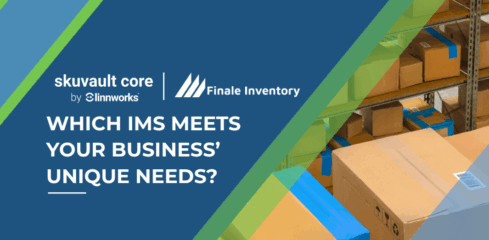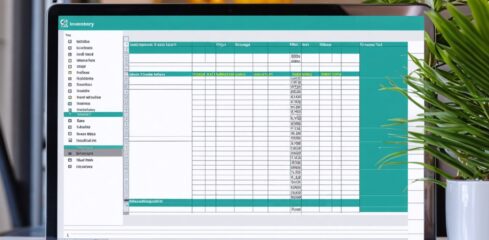Managing Inventory Types
Inventory management is the balancing act of having the right amount of stock at the right time to meet demand. It involves predicting sales and ordering new stock just in time to meet that demand. Having too much inventory can cause issues for your company. In some cases, products can expire or become obsolete. In other cases, the inability to liquidate your assets — or turn your inventory into money — interrupts and slows your operations. A stock that’s too small can run you into problems when more customers want to buy your products than what you have on hand.
Storing inventory costs money, so another aspect of managing inventory is optimizing warehouse space. The goal is to have the smallest amount of stock required to meet demand without costing the company extra in storage costs.
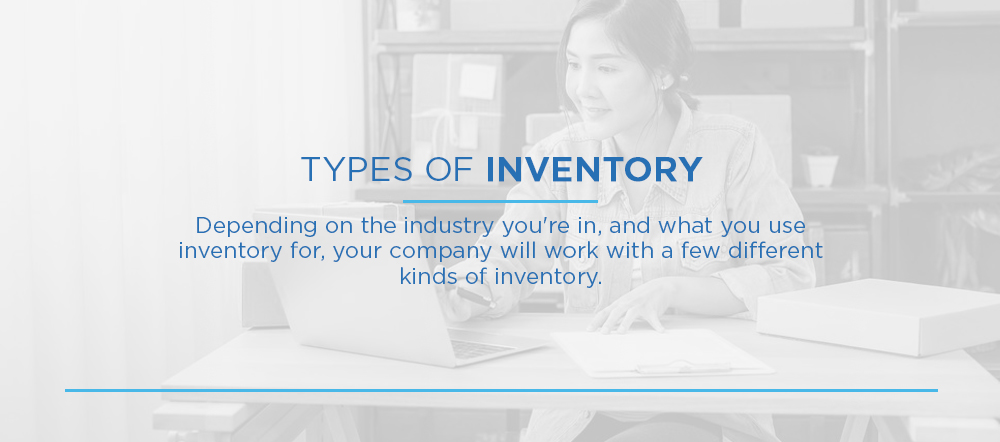

Different Types of Inventory
Depending on the industry you’re in, and what you use inventory for, your company will work with a few different kinds of inventory. Manufacturing deals with raw materials, which the business then converts into products for resale. In retail and eCommerce, your company deals with stock meant to sell to consumers. No matter the kind of inventory you deal with, it serves several functions.
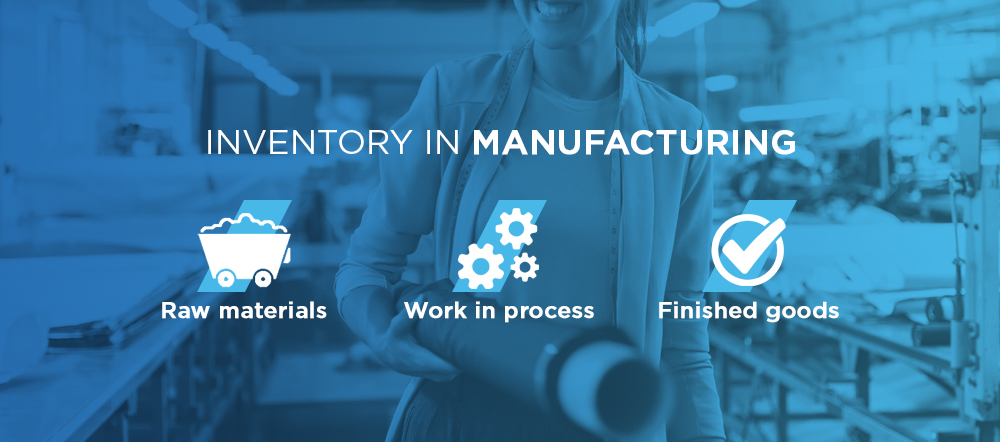

Inventory in Manufacturing
In manufacturing, stocking is sophisticated. You must manage the inventory you bring in as well as the inventory you generate as output. In production, there are three types of stock. As an inventory manager for a manufacturing company, you will likely have to keep track of each category separately for accounting purposes:
- Raw materials: Any items used in your manufacturing process to produce a final product are your raw materials. You might create these raw materials yourself within your business, or you may purchase them from a supplier. For example, a furniture manufacturer might have raw materials such as lumber, textiles and fasteners.
- Work in process: Your business might also need to keep track of your inventory during the manufacturing process. Your in-process inventory is any stock that has been manipulated from its original form. It’s not yet ready to be shipped off or sold to customers. Your company might not have to track work in process inventory if you have a short production time. If you experience inventory shrinkage during the manufacturing process — such as product defects — you may need to take stock of your work in process inventory.
- Finished goods: These are items that are finished and ready to be sold. They are in their final form and packaged to be shipped out to customers.
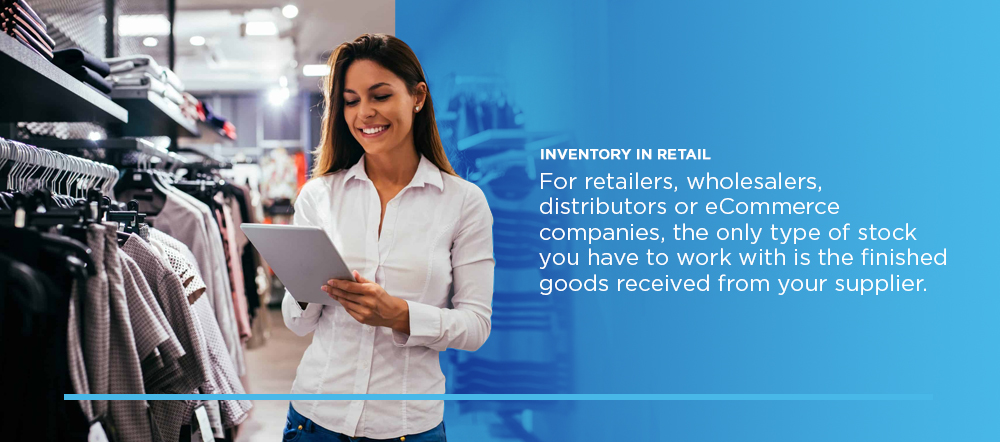

Inventory in Retail
For retailers, wholesalers, distributors or eCommerce companies, the only type of stock you have to work with is the finished goods received from your supplier. This inventory is called “merchandise.” While you might put the items in retail packaging, or do some minor assembly, these aren’t considered part of the manufacturing process.


Other Types of Inventory
Most of your stock is meant to be moved quickly. However, you might have other stock held in reserve to prepare for an increase in demand or a gap in your supply chain. Some other common types of inventory are:
· Current demand stock: Any inventory that’s ready for immediate use is classified as “current demand.” You calculate how much current demand stock you need from your projected demand.
· Transit inventory: Also known as pipeline stock, this is any inventory that’s traveling from one place to another. After your supplier confirms a shipment, the shipped items become transit inventory.
· Anticipation stock: When your company has trouble meeting demand during peak seasons, you can supplement your supply chain by ordering stock in advance. Any stock acquired in preparation for a spike in demand is anticipation stock.
· Safety stock: Unreliability in suppliers might cause you to keep some buffer stock. Safety stock allows your company to have an adequate supply when surprises happen. You can also take advantage of bulk discounts or free shipping by ordering in larger quantities.
· Maintenance, repair and operating items: Any stock that’s not incorporated into your finished goods or sold to consumers falls into this category. It’s the inventory you use to run your business. A manufacturer might have machinery or disposable molds in stock. Companies might need office supplies and computer equipment necessary to run their business. While you might have to reorder this inventory, you’re not passing it on to a buyer. You might still need to anticipate the demand for these items. For example, running out of pens or printer paper could impact your business’s operations.
Valuation of Inventory
As you manage your inventory, it’s critical to set a value on the current stock you have. Just like any other aspect of your business, your inventory is an asset. You use the value of your stock to determine your profit margin. You might also use it to price your items for retail and for accounting purposes. The value of your inventory is always in flux. Inventory valuation is the process of calculating your cost of goods sold (COGS). It takes into account the cost to purchase or manufacture the product, including the cost of materials, labor, overhead and shipping. Because many of these costs change over time, the value of two of the exact same items may be different.
One common costing method to calculate the COGs is landed cost, which is the total cost to you of getting a product from the supplier to its destination. To determine the landed cost, you need to consider the cost of the products themselves, plus any other costs you directly incur to obtain the products. Common costs used in the landed calculation include everything from shipping to freight costs.
Learn more about the capabilities available and fantastic features Finale Inventory has to offer your e-commerce business. See our cloud-based invoicing and inventory software perform by exploring the rest of our video tour. Ready to get started? Start your free 14-day trial today.




